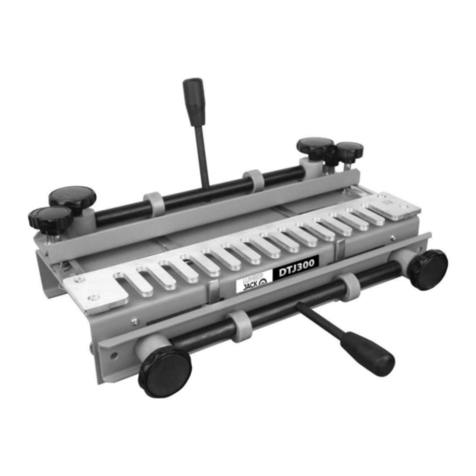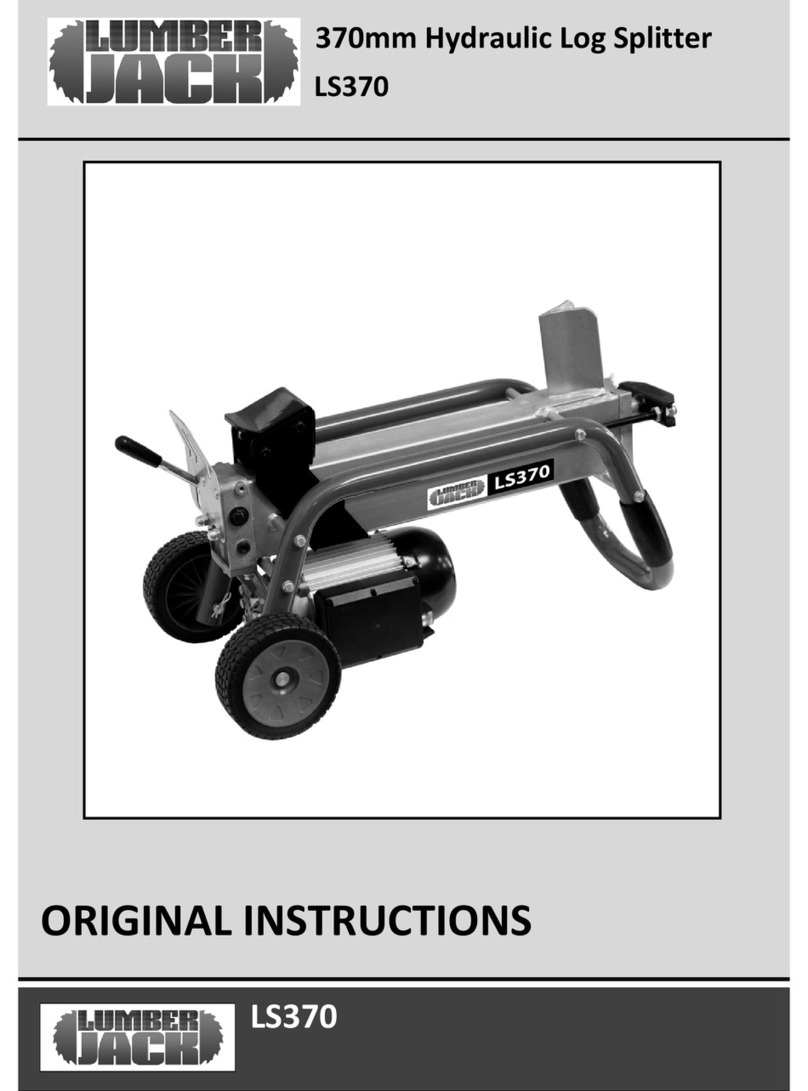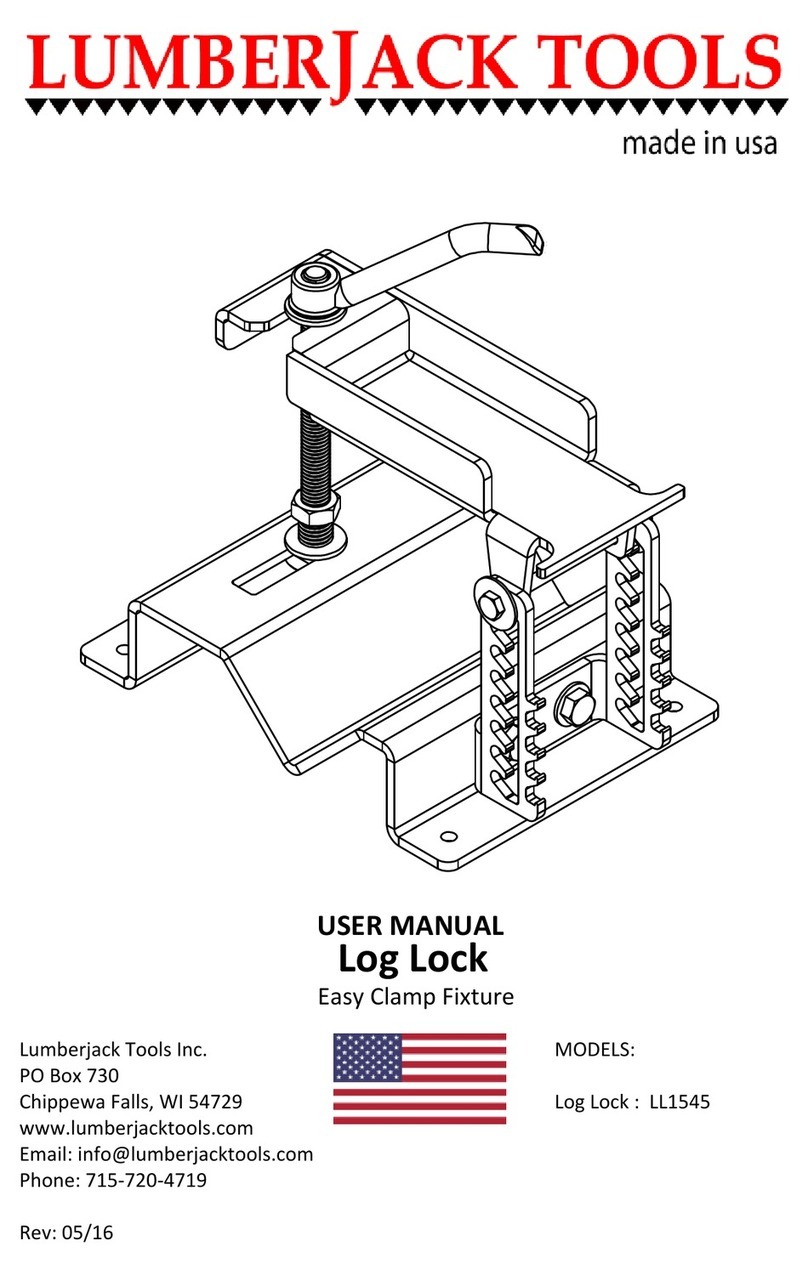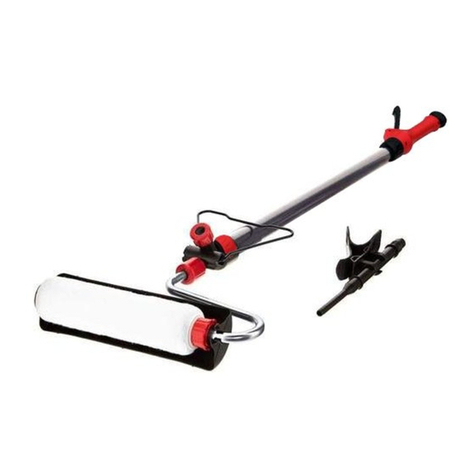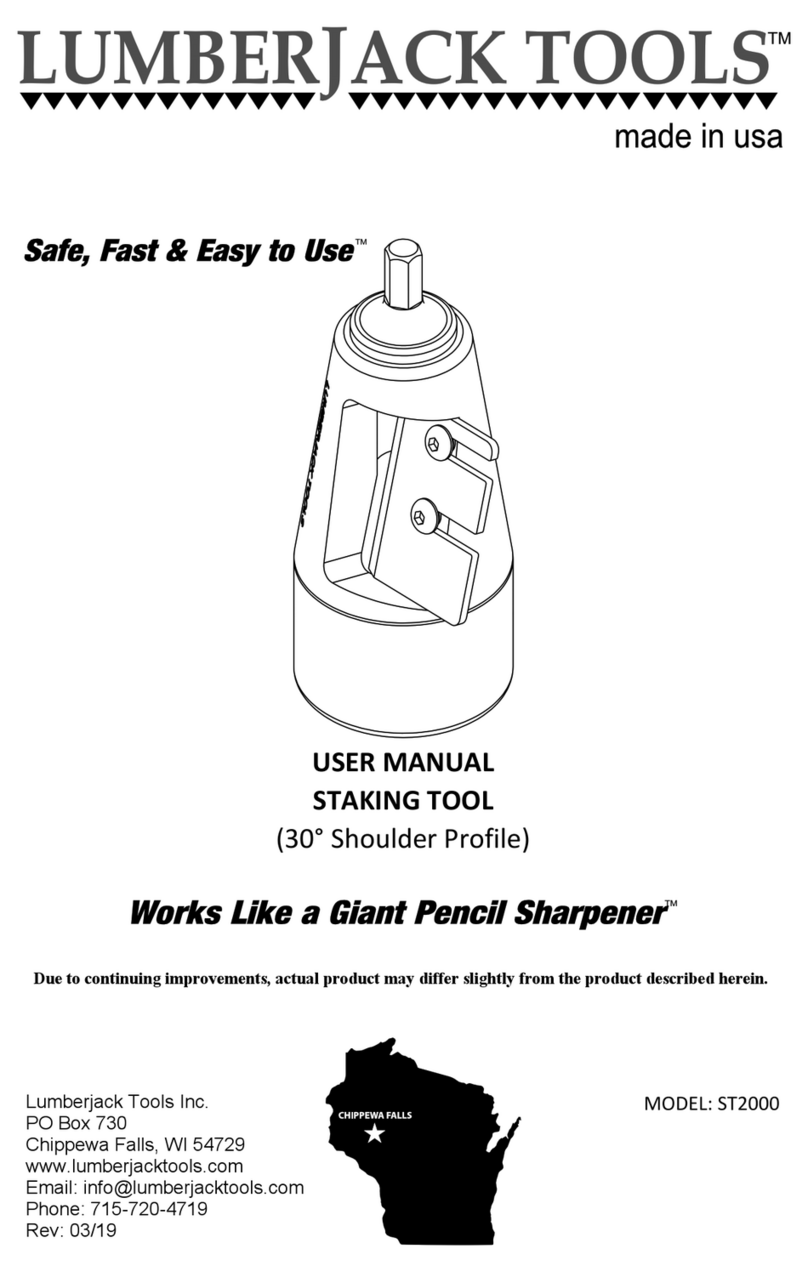
4
- Follow instruction for lubricating and changing accessories.
- Inspect tool cords periodically and if damaged have them repaired by an authorized service facility.
- Inspect extension cords periodically and replace if damaged.
- Keep handles dry, clean and free from oil and grease.
(15) Disconnect tools
- When not in use, before servicing and when changing accessories such as blades, bits and cutters,
disconnect tools from the power supply.
(16) Remove adjusting keys and wrenches
- Form the habit of checking to see that keys and adjusting wrenches are removed from the tool before
turning it on.
(17) Avoid unintentional starting
-Ensure switch is in “off” position when plugging in.
(18) Use outdoor extension leads
- When the tool is used outdoors, use only extension cords intended for outdoor use and so marked.
(19) Stay alert
- Watch what you are doing, use common sense and do not operate the tool when you are tired.
(20) Check damaged parts
- Before further use of tool, it should be carefully checked to determine that it will operate properly
and perform it’s intended function.
- Check for alignment of moving parts, binding of moving parts, mounting and any other conditions that
may affect it’s operation.
- A guard or other part that is damaged should be properly repaired or replaced by an authorized service
centre unless otherwise indicated in this instruction manual.
- Have defective switches replaced by an authoeized service centre.
(21) Warning
- The use of any accessory or attachment other than one recommended in this instruction manual may
present a risk of personal injury.
(22)Have your tool repaired by a qualified person
-This electric tool complies with the relevant safety rules. Repairs should only be carried out by qualified
persons using original spare parts. Otherwise this may result in considerable danger to the user.
(23) Never use the machine without the appropriate guard in place and correctly adjusted.
(24) Do not use knives, which are blunt as this increases the danger of kickback.
(25) Any portion of the cutter block not being used for planning shall be guarded.
(26) When planning short workpieces, a push-stick should be used.
(27) When planning narrow workpices additional measures. Such as of horizontal pressure devices and
spring-loaded guards, may be necessary to ensure safe working.
(28) Do not use the tool cut rebate.
(29)The effectiveness of the device for the prevention of kickback and the feed spindle should be
regularly inspected to ensure safe operation.
(30)Tools equipped with chip collection and extractor hoods shall be connected to the dust and
chip-collecting device.
(32) Use this tool only for wood or similar materials.
3) Need two persons for moving round the workshop due to its heavy weight.
